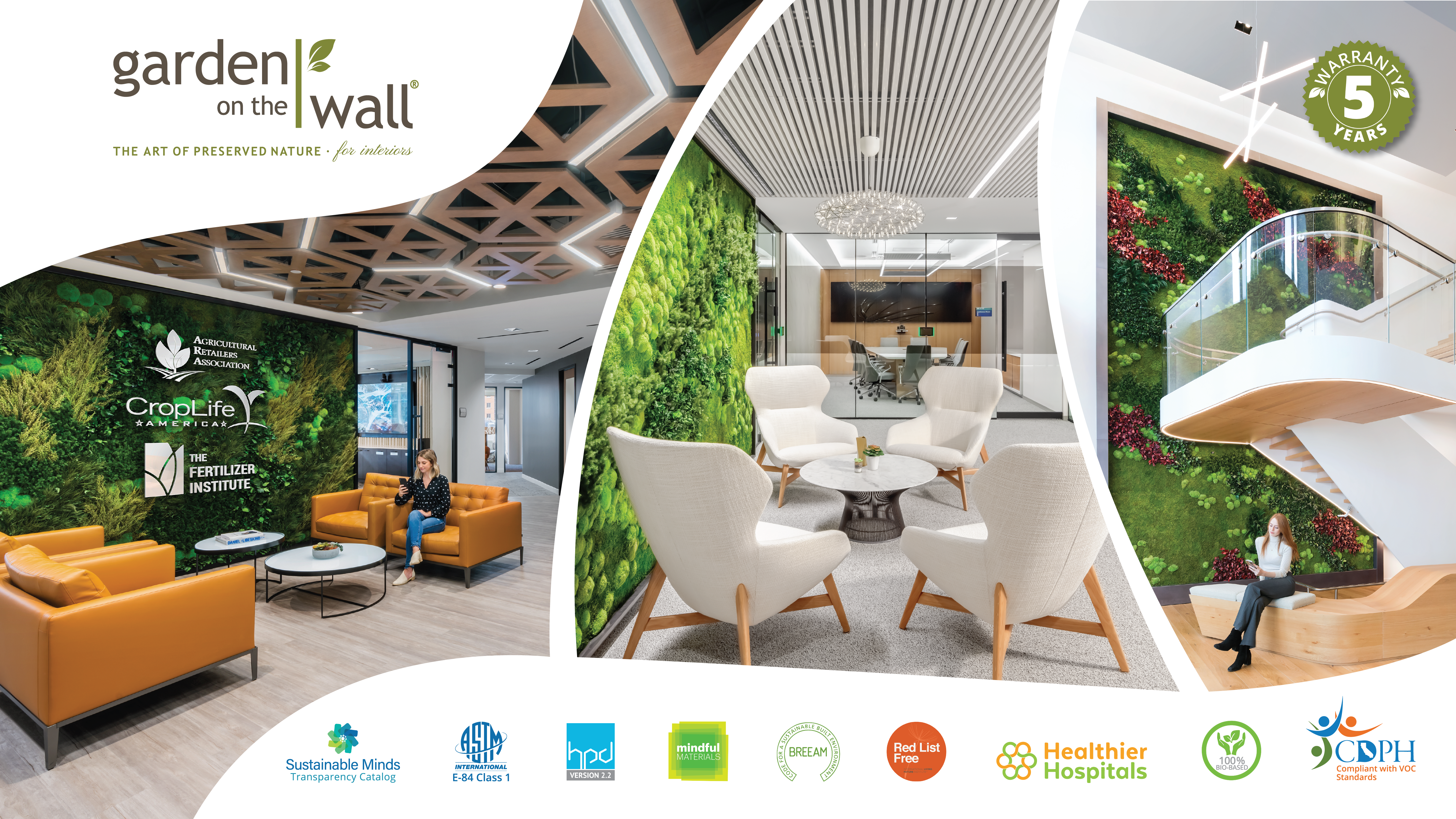Biophilic Design in Action
Indoor gardens with preserved plants
Sponsored by Garden on the Wall® | By Kathy Price-Robinson
Biophilic design is the latest frontier in creating indoor environments that help people feel, work, learn, and heal better. The design philosophy seeks to create indoors the patterns of nature that humans are naturally attuned to. This includes natural light and nature views, natural materials like wood and stone, and plants. While vertical walls of living plants seem to satisfy this human need for exposure to nature, the upkeep and maintenance of these assemblies has proven onerous. That accounts for the growing interest in striking installations of all-natural, preserved plants that require virtually no maintenance but that deliver a power immersive experience of nature. And why not? The plants are all-natural, albeit with their sap replaced with a non-toxic solution, and without the pruning, watering, leaking of systems, and burden of care that their live counterparts require. This course introduces the learner to the biophilic benefits of preserved plant gardens for indoor use and provides high-profile examples where these installations are already benefiting building occupants, building managers, and building owners.

Photo courtesy of Garden on the Wall
Garden on the Wall® is an award-winning provider of turn-key, Maintenance-free Garden Installations exclusively for interiors. Our gardens are created with All Natural Preserved Plants. Our mission is to elevate the spirits of occupants by bringing maintenance free nature-art installations to imaginative designed spaces; making these places better to live in and enjoy.
Originally published in Architectural Record
Originally published in March 2022
LEARNING OBJECTIVES
- Describe biophilic design and its effect on occupants of workspaces, healthcare, and hospitality.
- Explain how plants are preserved and used in indoor gardens.
- Define the design, fabrication, installation and maintenance of indoor gardens and planters created with all-natural, preserved plants.
- Discuss the importance of third-party testing and qualified installers for safety and sustainability.
- Identify several applications of preserved-plant gardens that bring biophilic design to workspaces, healthcare facilities, and hospitality venues.











